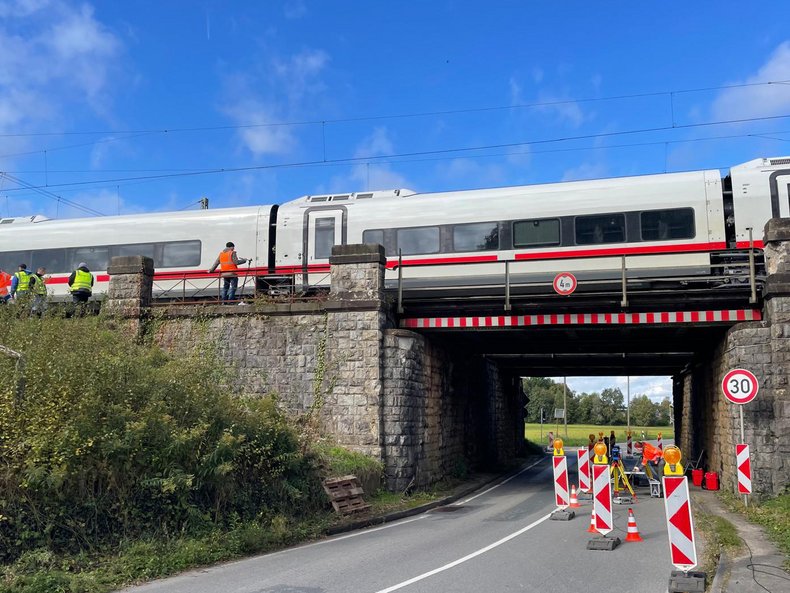At the latest since the collapse of the Carola Bridge in Dresden, the problem of Germany's dilapidated transport infrastructure, especially bridges, has been back in the public eye. As part of the Carl Zeiss Foundation-funded research project Profile Scanning (PLS) for the monitoring of infrastructure structures, the effects of new train models on older bridges have now been investigated in test runs under the leadership of DB InfraGO.
Fabian Mascioni, Sarah Hillen and Malte Horn in Hamburg, photo: Fabian Mascioni (left) and Malte Horn (right), CC BY-SA 4.0
Sarah Hillen, Fabian Mascioni and Malte Horn from Mainz University of Applied Sciences performed the PLS surveys on two bridges in Bielefeld and Hamburg in the first half of October to record deformations and the resulting vibration frequencies during train crossings. The additional special feature of the surveying system used is the spatial recording of the deformations and thus the possibility of deriving eigenmodes. The eigenmode of a bridge is an important factor for the stability and vibration properties of the structure.
The surveys involved the latest generation of long-distance trains, which generate different vibrations than their predecessors due to their barrier-free, ground-level access and modified running gear design. These vibrations affect the track bed and the bridges.
In general, each bridge has its own excitation frequency, which depends on various factors such as material, span, and construction. However, if the excitation frequency of the train is the same as a natural frequency of the bridge, this can lead to increased vibrations. As the excitation frequency also depends on the speed of the train, the tests, which lasted several days, were carried out at different speeds to identify possible critical speeds.
The entire team at Mainz University of Applied Sciences would like to thank TU Darmstadt (ISMD), GMG-Ingenieurgesellschaft, DB InfraGO, and all others involved on site for the excellent collaboration.






